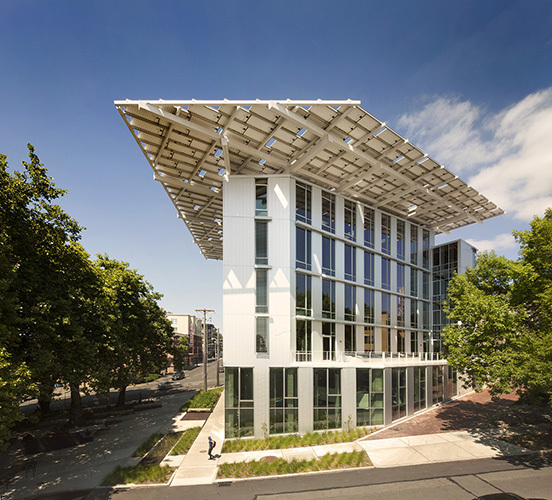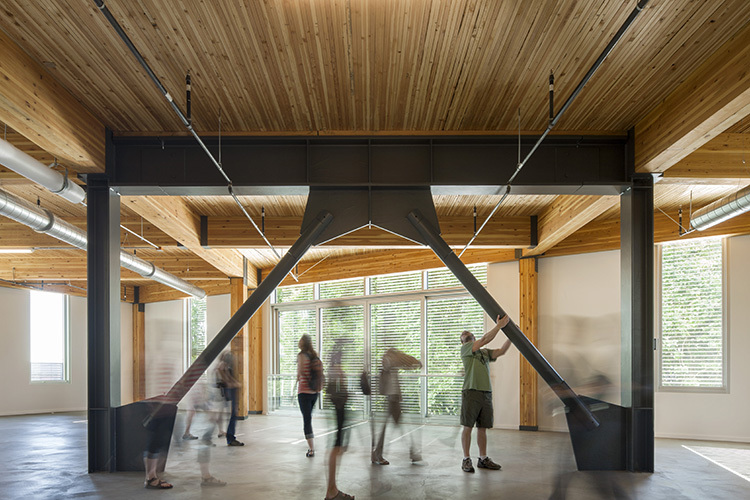The A/E/C industry has adopted a whole assortment of green building standards in recent years, aiming to cut down on the environmental impacts of new construction. Rain water is collected, hopefully cutting down on stormwater that sends pollutants to local waterways. Solar panels generate electricity, which should reduce the need for non-renewable power. Low energy light bulbs limit total energy consumption.
But targets and goals during design and construction mean very little if the finished product doesn’t perform. Luckily, one of DCI Engineers’ most environmentally sensitive projects is living up to its billing as “the greenest commercial building in the world” – just in time for Earth Day.

This month, Seattle’s Bullitt Center became one of only 21 other buildings worldwide to achieve the “Living Building” certification – the gold standard for sustainable building. To obtain the certification, the building had to undergo an extensive audit of its energy use, water retention and other green bonafides. The building passed with flying colors:
- A “Living Building” is required to produce all of its energy on-site. The audit showed that the Bullitt Center goes above and beyond, generating 60 percent more electricity than it uses. Excess energy is sent back to the Seattle energy grid. This remarkable energy production is possible due to a complex system of 575 solar panels, which extend beyond the building’s roof thanks to a structural steel grid designed by DCI Engineers.
- The Bullitt Center harvests all of the water it needs from rainfall. Greywater from taps and showers goes to a 500-gallon tank in the basement before being pumped into rooftop garden. Excess water is filtered and then deposited back into the aquifer.
- The Bullitt Center is the tallest building to ever institute a composting toilet system. State of the art aerobic digestion systems heat human waste to 190 degrees to create compost, which is taken off-site for use as fertilizer.
- A cutting edge computer system runs the facility, regulating interior temperature by automatically opening or closing window shades and ventilation systems and engaging the ground-source heat pumps, which send water from 26 geothermal wells 400 feet below the building to a web of pipes that snake through the floors and walls. DCI Engineers’ simple but innovative design of the building’s heavy timber framing system allowed for a three-inch topping slab of reinforced concrete on each level. The concrete’s ability to retain a steady temperature during hot or cold weather was key to the energy conservation goals.

- The raw materials used during construction were cross-checked to ensure that no toxic chemicals were present. The building’s wood was certified by the Forest Stewardship Council, ensuring that it came from well-managed and sustainable forests.
The Bullitt Center was visionary – the product of developers, architects and engineers challenging themselves to go above and beyond modern standards for green building. Two years later, that vision is officially reality.
Caleb Heeringa, Communications Coordinator | Caleb enjoys immersing himself in the A/E/C industry and informing audiences about DCI’s contribution to state-of-the-art structural development. Preferring a conversational style, he naturally narrates the firm’s design approach and project details to professionals in other industries. With a knack for adventure, he enjoys international travel and exploring the back corners of Washington’s wilderness.